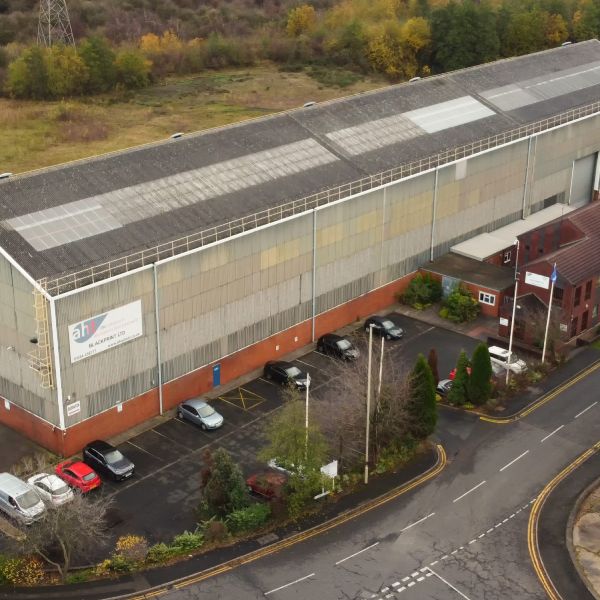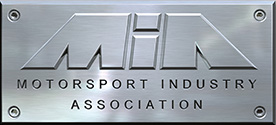Aerospace
With 40 years experience in the heat treatment of aluminium alloys for the aerospace industry, military applications and civil aviation, working with primes such as Rolls Royce, BAe & Airbus and also complying with NADCAP standards, we are recognised as the preferred choice in aerospace heat treatment.
Aerospace Heat Treatment
-
Over 40 Years Experience In The Heat Treatment Of Aluminium Alloys For The Aerospace Industry
-
High Integrity Components For Military Applications
-
At The Leading Edge Of Civil Aviation
-
Recognised As The Preferred Choice In Aluminium Heat Treatment
-
All Processes Comply With NADCAP Standards
-
Worked with primes such as Rolls Royce, BAe & Airbus
Aluminium Heat Treatment In The Aerospace Industry
The aerospace industry demands the utmost precision, reliability, and safety in its operations. From the construction of aircraft and spacecraft to the manufacturing of intricate components, every aspect must adhere to stringent standards. In this blog, we will explore the significance of alloy, aluminium, and metal heat treatment in the aerospace sector. We will discuss various types of parts, the importance of tight tolerances, the limited ability of other firms to meet aerospace safety standards, and the utilization of critical processes such as degreasing, dye-pen, mechanical setting, shotblasting, and precipitation hardening within aerospace manufacturing.

Adherance To NADCAP Standards For Aerospace Heat Treatment Projects
Our ability to work to specific criteria and prime contractor’s requirements, whilst also offering our unique advice and guidance at the design stage sets us apart from our competition.
All of our processes comply with the exacting standards set out by NADCAP and primes such as Rolls Royce, BAe and Airbus. These high end processes are also complemented by additional in house testing and quality monitoring services.
Aerospace parts must adhere to incredibly tight tolerances to ensure precision and reliability. With even the slightest deviation, the performance and safety of the entire system could be compromised. The heat treatment of alloys and metals is crucial to achieving these precise tolerances. Heat treatment processes eg solution treatment, polymer quenching and precipitation hardening enable the material to achieve specific properties such as improved strength, hardness, and dimensional stability.
Utilisation of Quality Heat Treatment Processes For Aerospace
Aluminium & Alloy Degreasing:
Prior to heat treatment, thorough degreasing is essential to remove any contaminants that could negatively impact the material’s properties. This process ensures a clean surface, allowing for effective heat treatment and optimal material performance.
Solution Treatment and Precipitation Hardening:
This heat treatment process enhances the strength and hardness of specific alloys. Following effective solution treatment and quenching of material, the material is subjected to a controlled aging process, where precipitates form, resulting in improved mechanical properties. Precipitation hardening is widely used in the aerospace industry to ensure the durability and performance of critical components.
Alloy and Aluminium Components In Aerospace Projects
Alloys, particularly aluminium alloys, play a pivotal role in aerospace manufacturing. Aluminium’s low density and high strength-to-weight ratio make it an ideal choice for aircraft and spacecraft construction. From fuselages and wings to engine components and landing gear, aluminium alloys offer the desired strength while reducing overall weight, enhancing fuel efficiency, and increasing payload capacity.
Why Use Alloy Heat Treatment For Aerospace Components?
“Alloy Heat Treatment has been a great supplier and was able to help Forgital exceed our customer’s expectations and requirements using a novel heat treatment process. They are always responsive and able to meet our lead-time requirements.”
– Doug Rawson, Director. Forgital Aerospace
For over 40 years, Alloy Heat Treatment has specialised in the heat treatment of aluminium alloys for the aerospace industry.
From high integrity components for the military, to the very latest developments at the leading edge of civil aviation, we are recognised as the preferred choice in aluminium heat treatment.
We enjoy long term relationships with both aerospace primes and sub tier suppliers, applying our heat treatment expertise to semi-finished parts to increase strength, endurance and life span.
To get a quote for alloy heat treatment services on your latest aerospace projects then please don’t hesitate to call us on +44 (0)1384 456777 , email us via sales@alloyheat.co.uk or fill out the contact form.
Aerospace Heat Treatment FAQ’s
Alloy heat treatment in aerospace involves subjecting specific components and parts to controlled heating and cooling processes to enhance their mechanical properties.
Landing Gear Sub-assemblies, Helicopter Rotor Linkage parts, Winglets, and Wing Stiffening Ribs are commonly heat treated in aerospace.
Aerospace heat treatment primarily involves 2xxx, 6xxx and 7xxx series Aluminium Alloys.
7xxx series Aluminium Alloys are used in aerospace applications because they offer the highest strength.
The main goal is to achieve the required strength and corrosion resistance in aerospace components.
The typical process involves solution annealing/ solution heat treatment, quenching, and double precipitation.
Solution annealing or solution treatment is the initial step where alloy parts are heated to a specific temperature, near to the melting point, to maximise solubility of key alloying elements. Alloy parts are then either slow cooled to maximise ductility, or quenched, to prepare the alloy parts for precipitation hardening.
Quenching is rapid cooling after solution annealing to lock in the desired properties and prevent undesired phase changes. This state prepares alloy parts for precipitation hardening (aka age hardening).
Double precipitation refers to the controlled precipitation of strengthening phases in 7xxx series alloy parts after quenching.
The first precipitation stage maximises nucleation zones for second stage precipitation. The second precipitation stage induces age hardening and overageing to maximise strength and corrosion resistance.








